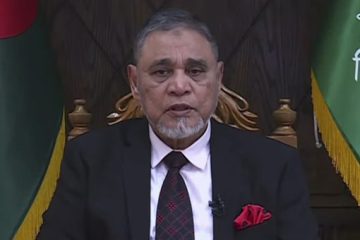News Desk : dhakamirror.com
The recent floods in eastern Bangladesh caused damage estimated at Tk 14,421.46 crore, which is around $1.20 billion, according to a study by the Centre for Policy Dialogue (CPD).
The findings were presented at a media briefing titled “Recent Flood Damage and Rehabilitation Process in Eastern Region: CPD’s Analysis” at the CPD office in Dhaka today (6 October).
CPD Executive Director Dr Fahmida Khatun and Research Director Khondaker Golam Moazzem, among others, spoke at the briefing while CPD Research Fellow Muntaseer Kamal delivered a presentation on the study.
Kamal highlighted that the damage made by the flood is 1.81% of the national budget for FY2024-25, and as in terms of GDP, it accounts for 0.29% of the provisional GDP of FY2023-24 and 0.26% of the projected GDP for FY25.
The damage assessment was based on 11 districts — Sylhet, Moulvibazar, Habiganj, Feni, Khagrachhari, Cox’s Bazar, Cumilla, Noakhali, Chattogram, Lakshmipur and Brahmanbaria — of the eastern region that were affected by the floods, which started on August 19, 2024, he said.
The significantly affected areas included Cumilla, Feni, Chattogram and Lakshmipur.
CPD said the agriculture and forestry sectors were hit the hardest during the flood, with losses amounting to Tk5,169.71 crore or 35.85% of the total damage.
Following this, the infrastructure sector incurred losses of Tk4,653 crore, housing Tk2,407 crore, health Tk2,062 crore, educational infrastructure Tk89.63 crore, and the industrial sector Tk38 crore.
CPD also said in the agriculture sector, aman rice cultivation was damaged the most during the flood. While the amount of damage to aman rice production was not mentioned in the report, CPD said it could impact the country’s overall food security and recommended the government make quick decisions regarding rice imports.
Kamal said seed beds have gone through considerable damage owing to the flood. So, an adequate supply of seeds will have to be ensured so that next season’s Aman cultivation is not hampered.
Citing the study, Kamal said Noakhali experienced the highest monetary losses, accounting for 29.07% (Tk4,191 crore) of the total damage, followed by Cumilla (23.51%), Feni (18.61%), and Chattogram (11.63%).
CPD also said a lack of consistency was observed in the distribution of relief. It said some regions have received multiple rounds of aid, while others did not receive any, indicating issues with coordination and capability.
Recommendations
Addressing the briefing, CPD Research Fellow Kamal said that the government should increase the budget allocation for relief distribution, especially considering that the frequency and intensity of floods and cyclones are projected to increase.
He added that social safety net allocations, particularly those for old age citizens, widows and destitute women, can be increased after careful assessment to subside the flood’s impact in affected areas.
He said the government needs to ensure easy access to agricultural loans for farmers. Many small businesses have also been affected — many of which have taken loans from microfinance organisations.
Given the current scenario, Kamal said a moratorium on loan repayment and expansion of the repayment period could be considered.
He also emphasised effective coordination among various stakeholders for rapid emergency response before and during the flood period.
Coordination between the Meteorological Department, Flood Forecasting and Warning Centre, Ministry of Disaster Management and Relief, and local government units such as Union Parishad needs to be strengthened, he said.





















